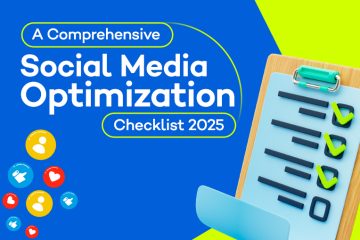Running a successful advertising campaign requires more than just creativity or budget. The real power lies in strategy, and one of the most critical components of that strategy is how you bid. Whether you’re focused on brand visibility, traffic, leads, or conversions, choosing the right bidding strategy determines how efficiently your ads perform and how wisely your budget is spent.
As a trusted Google display advertising company, DI Infotech has been working with brands across India to help them identify the right bidding strategies for their unique needs. In this blog, we break down the important factors to consider when selecting a bidding strategy that aligns with your business goals.
Why Your Bidding Strategy Matters

The bidding strategy you choose is directly tied to your return on investment (ROI). A campaign with poor bidding can exhaust your budget quickly without generating the desired results. On the other hand, a well-structured bidding approach helps you:
- Maximize ad visibility among your target audience
- Improve conversion rates
- Control spending
- Optimize performance based on campaign goals
From manual to automated bidding options, platforms like Google Ads offer multiple strategies for advertisers. Selecting the right one isn’t about guessing—it’s about understanding how each method aligns with your goals.
Understand Your Campaign Objective First
Before choosing any bidding model, define your campaign goal. The ideal bidding strategy will depend entirely on what you want to achieve. Are you aiming for clicks, sales, or awareness? Each goal calls for a different strategy.
Here are the most common campaign objectives and the matching bidding options:
1. Drive Website Traffic
Use: Manual CPC or Maximize Clicks
Goal: Get the most people to visit your site. Great for product awareness or blog visits.
2. Generate Leads or Sales
Use: Target CPA or Maximize Conversions
Goal: Increase actions like form submissions, purchases, or calls. Best for lead generation and eCommerce.
3. Build Brand Awareness
Use: Target Impression Share or CPM
Goal: Ensure your ad appears prominently to build recognition, especially across the Google Display Network.
4. Improve Return on Ad Spend (ROAS)
Use: Target ROAS
Goal: Maximize revenue based on the value of each conversion. Ideal for businesses selling products online.
Factors to Consider When Choosing a Bidding Strategy

Business Commercial Corporate Development Concept
Let’s take a deeper look into the core elements you should evaluate before locking in your bidding strategy. These factors are the foundation of a high-performing campaign and ensure your ad spend is invested wisely.
1. Campaign Objective Alignment
Your objective must match your bidding strategy. Using a strategy optimized for impressions when your goal is conversions can lead to poor ROI. Identify your success metric and reverse-engineer the bidding approach accordingly.
2. Budget Constraints and Flexibility
Your budget should be realistic for your campaign size and competitive landscape. Automated strategies, especially Target CPA or ROAS, require budget flexibility to test and optimize. If you’re working with limited funds, starting with Manual CPC may offer more control.
3. Audience Targeting Setup
The more refined your audience, the more efficient your bidding will be. Google Display advertising, in particular, works best when combined with defined audience segments such as interests, demographics, or remarketing lists.
4. Conversion Tracking Accuracy
Automated strategies depend on historical data. If conversion tracking is missing or inaccurate, the system can’t optimize properly. Set up tracking using tools like Google Ads Conversion Tracking or Google Analytics before launching your campaign.
5. Ad Platform and Placement
Different platforms and ad networks perform differently based on user intent. Google Display Network (GDN) suits impression-focused or awareness campaigns. Google Search Network suits conversion-based objectives. Choose a bidding model suited to the platform’s strengths.
6. Historical Campaign Data
If your campaigns have run before, use historical data to inform your bidding decisions. This data helps Google’s smart bidding systems learn faster and optimize better. Without it, performance may dip before improvement begins.
7. Campaign Size and Duration
Short campaigns may not provide enough time for automated strategies to learn and adjust. For quick promotions or time-sensitive offers, Manual CPC or Enhanced CPC offers better control. Long-term campaigns benefit from Target CPA or Maximize Conversions after data collection.
8. Competitive Industry Landscape
Industries like finance, travel, and real estate tend to have higher cost-per-click rates. Choose a bidding model that balances cost with expected outcomes. Target ROAS or CPA may be more sustainable for high-value industries.
9. Support from a Google Display Advertising Company
Working with a Google display advertising company like DI Infotech ensures professional setup, regular monitoring, and timely adjustments. Expertise in bid strategy selection can reduce wasted spend and accelerate campaign performance.
Different Bidding Strategies Explained
Here are the most commonly used Google Ads bidding strategies, with explanations on when and how to use them:
Manual CPC (Cost-Per-Click)
- Full control over individual keyword or placement bids
- Great for beginners or limited budgets
- Requires active monitoring
Enhanced CPC (ECPC)
- A semi-automated version of Manual CPC
- Google adjusts your bids based on the likelihood of a conversion
- Good for testing automation with some control
Maximize Clicks
- Focuses on driving as many clicks as possible within your budget
- Ideal for awareness campaigns
- Doesn’t guarantee conversions
Maximize Conversions
- Google sets bids to get the most conversions for your budget
- Requires conversion tracking
- Best for lead generation or eCommerce goals
Target CPA (Cost Per Acquisition)
- Aims to get as many conversions as possible at your target cost
- Needs stable tracking and historical conversion data
- Useful for scaling lead generation
Target ROAS (Return on Ad Spend)
- Optimizes for conversion value, not just quantity
- Best for online retailers and service providers with variable pricing
- Needs accurate revenue tracking
Target Impression Share
- Focuses on showing your ad at the top or first page of results
- Great for brand awareness or dominance on specific keywords
- Less effective for ROI-focused campaigns
CPM and vCPM (Cost Per Thousand Impressions)
- Suitable for display and video campaigns
- Ideal for boosting exposure rather than driving clicks or conversions
Common Mistakes to Avoid
Choosing a bidding strategy is not just about selecting from a dropdown menu. These common errors can limit your campaign success:
- Skipping Goal Definition: Without a clear goal, your bid strategy will always fall short.
- Using Automation Without Data: Target CPA or ROAS can misfire without enough performance history.
- Poor Tracking Setup: Inaccurate or missing conversion data breaks smart bidding algorithms.
- Underfunding Campaigns: If your budget is too small, automated bidding models won’t optimize properly.
- Lack of Testing: Test and adjust your strategy as your campaign progresses.
- Wrong Platform Strategy: Don’t use the same bidding model for Search and Display without considering user behavior differences.
Why Work with DI Infotech?
As a seasoned digital marketing company in India, DI Infotech offers tailored support to help businesses get the best out of their ad campaigns. We understand that bidding isn’t just technical—it’s strategic. Here’s how we help:
- Evaluate campaign objectives, audience, and competition before selecting a strategy
- Set up accurate conversion tracking and analytics tools
- Start with controlled manual bidding for new campaigns
- Gradually move to automation (CPA, ROAS) as data accumulates
- Monitor and adjust bids weekly for maximum efficiency
Our role as a Google display advertising company also means we specialize in visual, awareness, and remarketing campaigns that need careful placement and impression-based bidding. We help brands scale smarter, not harder.
Conclusion
Choosing the right bidding strategy is a critical step in any advertising campaign. From setting campaign goals and defining your audience to choosing the right bidding method and tracking conversions, every step affects your outcome. A thoughtful approach backed by data and professional guidance can save budget, improve performance, and boost returns.
Whether you’re just starting out or scaling your Google Display Network campaigns, partnering with a reliable digital marketing company in India like DI Infotech ensures that every click counts and every rupee is spent smartly. Let the strategy do the heavy lifting—we’ll handle the execution.





0 Comments